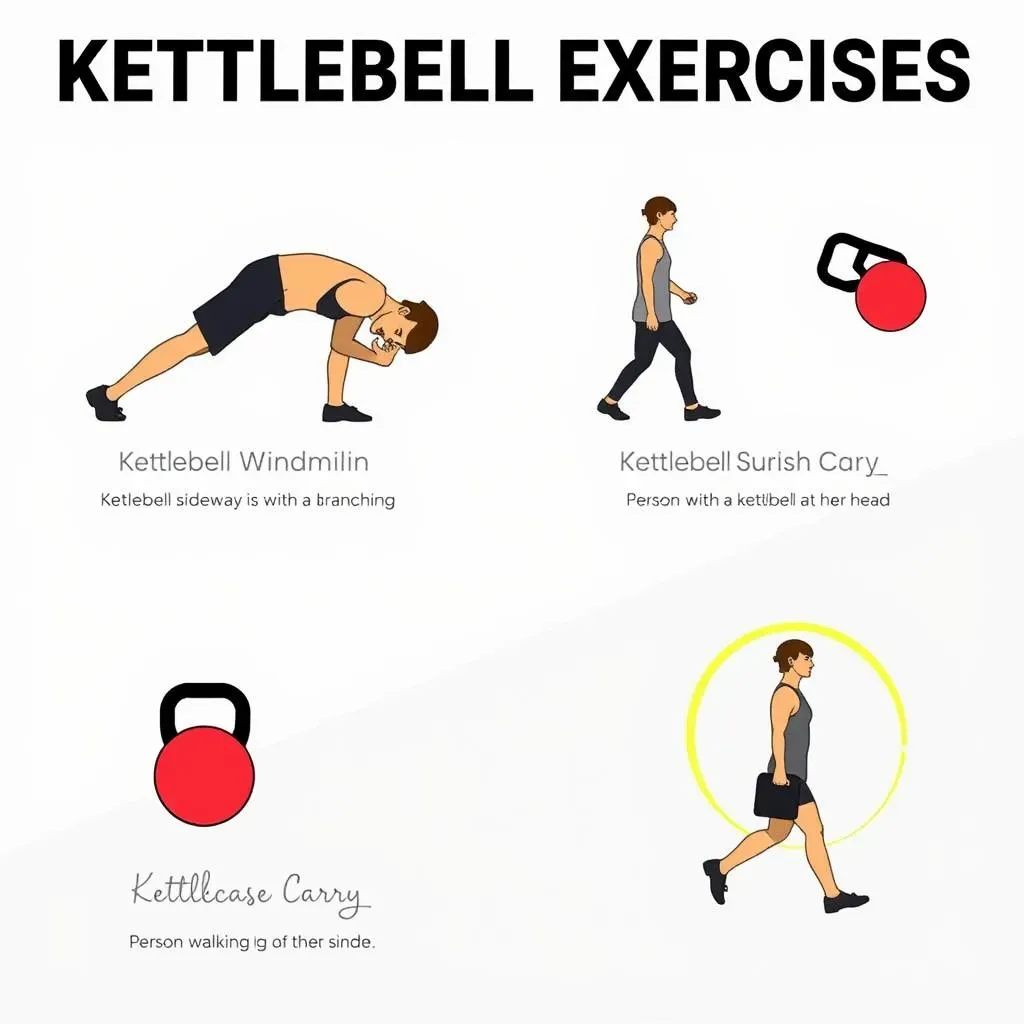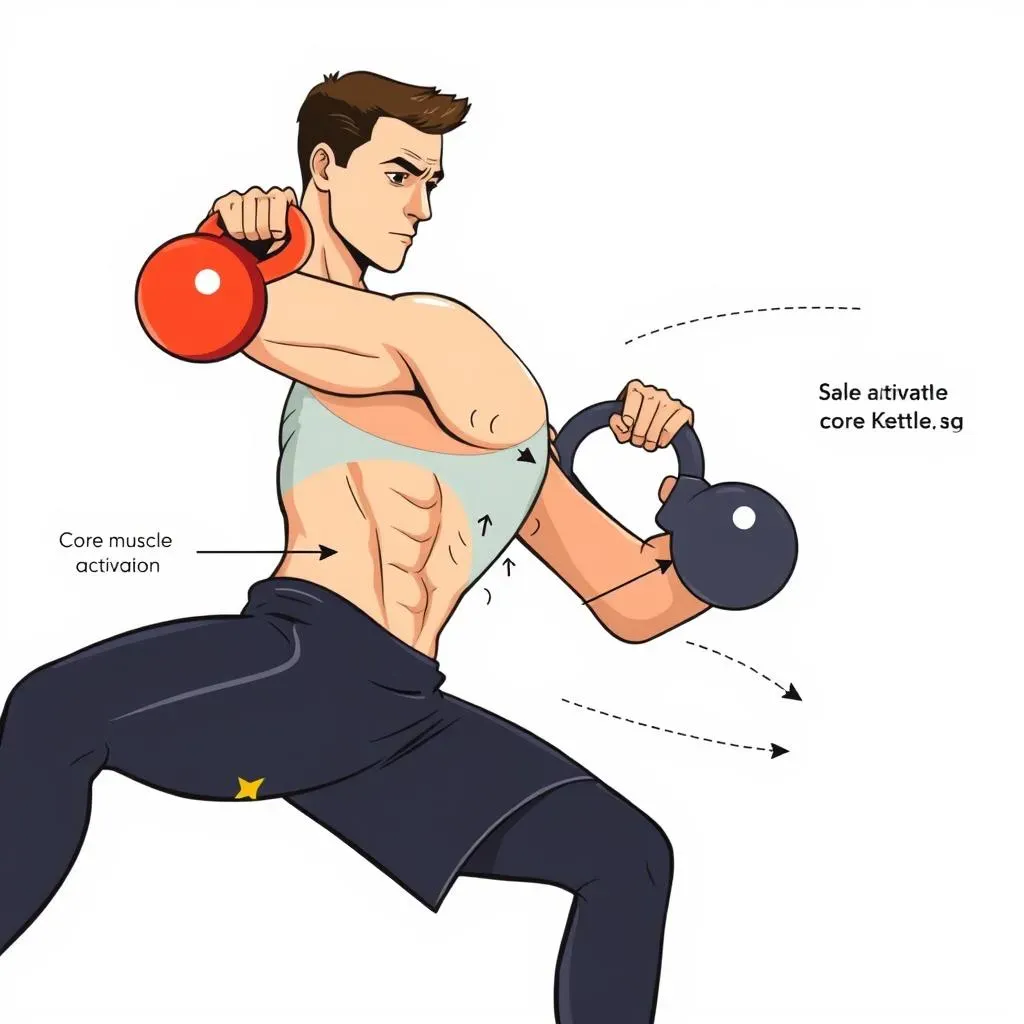Table of Contents
Ever feel like your core's a bit… squishy? You're not alone. Many of us chase six-pack abs, but a truly strong core is about so much more. It's about stability, power, and protecting your spine. That’s where kettlebell core stability exercises come in. Forget endless crunches; we're talking about functional movements that build real-world strength. This isn't just about looking good; it's about moving better, feeling stronger, and preventing injuries. In this article, we'll explore why these exercises are a game-changer, highlight the top moves to include in your routine, and guide you on how to build a workout plan that fits your needs. Get ready to ditch the boring ab routines and discover the power of kettlebell core stability exercises for a stronger, more resilient you. We'll cover the why, the what, and the how, making sure you're set to start your journey to a bulletproof core.
Why Kettlebell Core Stability Exercises Are a Game Changer

Why Kettlebell Core Stability Exercises Are a Game Changer
Beyond the Six-Pack: Real Core Strength
Let's be real, crunches are boring and they don't really give you the functional strength you need for everyday life. Kettlebell core exercises? They are a whole different beast. They force your core to work as a unit, not just as a set of muscles that look good in a mirror. Think about it: when you pick up something heavy, your whole body engages, not just your abs. Kettlebells help you train that way, building a core that's strong, stable, and ready for anything.
It's about more than just aesthetics; it's about how you move. A strong core is the foundation for everything, from walking to lifting groceries to playing sports. When your core is weak, it's like building a house on a shaky foundation—it will eventually crumble. That leads to injuries, pain, and a whole lot of frustration. So, when we say "game changer," we mean it.
The Functional Advantage
Kettlebells aren't like dumbbells or machines. They're designed to challenge your body in three dimensions, which is exactly how you move in the real world. The offset weight of the kettlebell forces your core to work harder to stabilize your body, making these exercises incredibly effective for building functional strength. You're not just building muscle; you're improving your balance, coordination, and overall body control. Think of exercises like the kettlebell swing or the Turkish get-up – they require your core to engage constantly to maintain stability and control.
This isn't about isolating muscles; it's about integrating them. Kettlebell training helps you develop a core that works in harmony with the rest of your body. It's like having a well-coordinated team, where each muscle knows its role and works together seamlessly. This type of training translates directly to better performance in all areas of your life, whether you're an athlete or just trying to keep up with your kids.
Benefit | Why It Matters |
|---|---|
Improved Stability | Reduces risk of injuries, better balance |
Functional Strength | Easier daily tasks, better athletic performance |
Enhanced Body Control | Better movement, coordination |
A Safer, Stronger Spine
One of the biggest reasons I'm such a fan of kettlebell core exercises is their impact on spine health. A weak core can lead to low back pain, which can be a real pain – literally. Kettlebell exercises, when done correctly, strengthen the muscles that support your spine, creating a natural "corset" that protects you from injury. It's not about just building muscle, it's about creating a stable and resilient structure that allows you to move freely and confidently.
Think of your core as a shield for your spine. When your core is strong, it can absorb shock and prevent your spine from taking the brunt of the impact. This is especially important for people who spend a lot of time sitting or lifting. Kettlebell training is a fantastic way to build the kind of core strength that protects your spine and allows you to move with ease. It's about investing in your long-term health and well-being, and that's a game changer in itself.
Top Kettlebell Exercises for Core Stability

Top Kettlebell Exercises for Core Stability
The Core Stability All-Stars
Alright, so now that you understand why kettlebell core stability exercises are so awesome, let's get into the good stuff—the actual exercises! We're not going to waste your time with fluff, I'll just give you the moves that give you the best bang for your buck. These aren't your average sit-ups or planks; these exercises will challenge you in ways you didn't think possible. I’m talking about moves that will not only strengthen your core but also improve your overall movement and stability. We're diving into some of my favorites, the ones I've seen work wonders for myself and others.
First up, we've got the Kettlebell Windmill. This one's a bit of a showstopper, not gonna lie. It’s not just about bending over; it's about controlling your movement, engaging your obliques, and improving your hip mobility all at once. Then, we're moving to the Kettlebell Turkish Get-Up, a move that basically hits every muscle in your body, with a huge emphasis on core stability. It’s a bit complex, yes, but once you get the hang of it, it’s one of the most rewarding exercises out there. And of course, we can’t forget the Kettlebell Suitcase Carry, a deceptively simple move that will have your core screaming in no time, as well as the Kettlebell Halo, that is just a great move for your shoulder and core stability. These moves aren't just about building a six-pack; they’re about building a core that can handle anything life throws at it.
Exercise | Why It's Great for Core |
|---|---|
Kettlebell Windmill | Oblique strength, hip mobility, stability |
Kettlebell Turkish Get-Up | Full-body engagement, core stability |
Kettlebell Suitcase Carry | Anti-lateral flexion, core strength |
Kettlebell Halo | Shoulder stability, core engagement |
How to Build a Kettlebell Core Stability Routine

How to Build a Kettlebell Core Stability Routine
Starting Smart: Form Over Everything
so you're ready to start swinging some kettlebells? Awesome! But hold your horses for a sec. Before you go all out, let's talk about form. It's tempting to just grab a heavy kettlebell and go for it, but trust me, that's a recipe for disaster. I've seen too many people get injured because they prioritized weight over proper technique. It's like trying to build a skyscraper on a wobbly foundation—it's just not gonna work. So, before you even think about adding weight, master the movements with a lighter kettlebell, or even just practice the motions without any weight at all. It's about learning to engage your core, control your body, and move with purpose.
Think of it like this: you wouldn't try to run a marathon without learning to walk first, would you? The same principle applies here. Take the time to learn the correct form, and you'll not only prevent injuries but also get much better results from your workouts. Remember, it's not about how much weight you can lift; it's about how well you can lift it. Focus on slow, controlled movements, and really feel your core muscles working. Once you've got the basics down, then you can start thinking about increasing the challenge.
Progression and Consistency
Now that you’ve got the form down, it's time to talk about progression. You shouldn’t just keep doing the same thing every time you workout. Your body will get used to it, and you'll stop seeing results. So, how do you progress? Well, there are a few ways. You can increase the weight of the kettlebell, you can add more repetitions, or you can increase the number of sets you do. But again, it's not about just going as hard as possible. It's about gradually increasing the challenge over time, and making sure that you're still maintaining good form. It's about listening to your body and not pushing yourself too hard too soon.
Consistency is key. It's better to do a little bit of kettlebell training consistently than to do a lot of it sporadically. It's like trying to learn a new language—you can’t cram it all in one day, you need to practice it regularly. So, aim for 2-3 kettlebell sessions per week, and make sure you're giving your body enough time to recover between workouts. Remember, rest is just as important as the workout itself. It's during rest that your muscles repair and grow stronger. It’s a marathon, not a sprint.
Progression Method | How to Apply |
|---|---|
Increase Weight | Gradually use heavier kettlebell when form is solid |
Add Repetitions | Increase the number of times you perform each exercise |
Increase Sets | Add more rounds of the workout |
Listen to Your Body
Finally, and this is super important, listen to your body. I know it sounds cliché, but it's true. If something hurts, stop. I mean, really stop. Don’t try to push through pain, it's not worth it. Your body is sending you a signal, and it’s important to pay attention. There's a difference between muscle fatigue and pain; learn the difference. Muscle fatigue is normal, it means your muscles are working hard, pain means something is wrong. Don’t be afraid to take a break, scale back the intensity, or modify the exercises if needed. It's all part of the process.
Your fitness journey is your own, and it's important to make it work for you. Don't compare yourself to others, and don't feel like you have to follow a strict program. Be flexible, be patient, and be kind to yourself. Remember, this is about building a strong, healthy, and resilient body that can handle whatever life throws at it. And that, my friend, is a goal worth working towards. Kettlebell core stability exercises are an amazing tool, but they’re just one piece of the puzzle. Combine them with a healthy diet, good sleep, and a positive mindset, and you’ll be unstoppable.
Wrapping Up: Your Journey to a Stable Core with Kettlebells
So, there you have it. Kettlebell core stability exercises aren't just another fitness trend; they're a powerful tool for building a stronger, more resilient you. By understanding the importance of core stability and incorporating these targeted movements into your routine, you're not just chasing a six-pack, you're building a foundation for better movement, improved posture, and injury prevention. Remember, consistency is key, and it’s okay to start slow and gradually increase the intensity. Listen to your body, focus on proper form, and enjoy the process of becoming stronger. Your journey to a stable core with kettlebells is a marathon, not a sprint, so keep at it and you’ll reap the rewards. Now go grab that kettlebell and get to work!